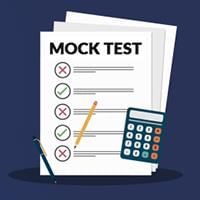CLAT Exam > CLAT Questions > Identify the Buddhist Literature from the fol...
Start Learning for Free
Identify the Buddhist Literature from the following -
- a)Tripitakas
- b)Upanishads
- c)Angas
- d)Aranyakas
Correct answer is option 'A'. Can you explain this answer?
Most Upvoted Answer
Identify the Buddhist Literature from the following -a)Tripitakasb)Upa...
Tripitaka is a traditional term used by various Buddhist sects to describe their various canons of scriptures. As the name suggests, a Tripitaka traditionally contains three "baskets" of teachings: a Sutra Pitaka, a Vinaya Pitaka and an Abhidharma Pitaka. Tripitaka is the three main categories of texts that make up the Buddhist canon.
Free Test
FREE
| Start Free Test |
Community Answer
Identify the Buddhist Literature from the following -a)Tripitakasb)Upa...
Tripitakas - Buddhist Literature
The Tripitakas, also known as the three baskets, are the traditional scriptures of Buddhism. They are considered to be the most authoritative texts in Buddhism, as they contain the teachings of Gautama Buddha. The Tripitakas are written in Pali language and are divided into three main sections:
- **Vinaya Pitaka**: This section deals with the rules and regulations for monastic discipline. It contains the code of conduct for monks and nuns, as well as guidelines for communal living and ethical behavior.
- **Sutta Pitaka**: This section contains the discourses of the Buddha. It is further divided into five collections, each focusing on different aspects of the Buddha's teachings, such as ethics, meditation, and philosophy.
- **Abhidhamma Pitaka**: This section is a more analytical and philosophical treatise on the teachings of the Buddha. It delves into the nature of reality, consciousness, and mental factors.
The Tripitakas are considered to be the foundation of Buddhist teachings and are studied and revered by Buddhists all over the world. They provide guidance on how to live a meaningful and ethical life, as well as insights into the nature of suffering and the path to liberation.
The Tripitakas, also known as the three baskets, are the traditional scriptures of Buddhism. They are considered to be the most authoritative texts in Buddhism, as they contain the teachings of Gautama Buddha. The Tripitakas are written in Pali language and are divided into three main sections:
- **Vinaya Pitaka**: This section deals with the rules and regulations for monastic discipline. It contains the code of conduct for monks and nuns, as well as guidelines for communal living and ethical behavior.
- **Sutta Pitaka**: This section contains the discourses of the Buddha. It is further divided into five collections, each focusing on different aspects of the Buddha's teachings, such as ethics, meditation, and philosophy.
- **Abhidhamma Pitaka**: This section is a more analytical and philosophical treatise on the teachings of the Buddha. It delves into the nature of reality, consciousness, and mental factors.
The Tripitakas are considered to be the foundation of Buddhist teachings and are studied and revered by Buddhists all over the world. They provide guidance on how to live a meaningful and ethical life, as well as insights into the nature of suffering and the path to liberation.

|
Explore Courses for CLAT exam
|

|
Question Description
Identify the Buddhist Literature from the following -a)Tripitakasb)Upanishadsc)Angasd)AranyakasCorrect answer is option 'A'. Can you explain this answer? for CLAT 2025 is part of CLAT preparation. The Question and answers have been prepared according to the CLAT exam syllabus. Information about Identify the Buddhist Literature from the following -a)Tripitakasb)Upanishadsc)Angasd)AranyakasCorrect answer is option 'A'. Can you explain this answer? covers all topics & solutions for CLAT 2025 Exam. Find important definitions, questions, meanings, examples, exercises and tests below for Identify the Buddhist Literature from the following -a)Tripitakasb)Upanishadsc)Angasd)AranyakasCorrect answer is option 'A'. Can you explain this answer?.
Identify the Buddhist Literature from the following -a)Tripitakasb)Upanishadsc)Angasd)AranyakasCorrect answer is option 'A'. Can you explain this answer? for CLAT 2025 is part of CLAT preparation. The Question and answers have been prepared according to the CLAT exam syllabus. Information about Identify the Buddhist Literature from the following -a)Tripitakasb)Upanishadsc)Angasd)AranyakasCorrect answer is option 'A'. Can you explain this answer? covers all topics & solutions for CLAT 2025 Exam. Find important definitions, questions, meanings, examples, exercises and tests below for Identify the Buddhist Literature from the following -a)Tripitakasb)Upanishadsc)Angasd)AranyakasCorrect answer is option 'A'. Can you explain this answer?.
Solutions for Identify the Buddhist Literature from the following -a)Tripitakasb)Upanishadsc)Angasd)AranyakasCorrect answer is option 'A'. Can you explain this answer? in English & in Hindi are available as part of our courses for CLAT.
Download more important topics, notes, lectures and mock test series for CLAT Exam by signing up for free.
Here you can find the meaning of Identify the Buddhist Literature from the following -a)Tripitakasb)Upanishadsc)Angasd)AranyakasCorrect answer is option 'A'. Can you explain this answer? defined & explained in the simplest way possible. Besides giving the explanation of
Identify the Buddhist Literature from the following -a)Tripitakasb)Upanishadsc)Angasd)AranyakasCorrect answer is option 'A'. Can you explain this answer?, a detailed solution for Identify the Buddhist Literature from the following -a)Tripitakasb)Upanishadsc)Angasd)AranyakasCorrect answer is option 'A'. Can you explain this answer? has been provided alongside types of Identify the Buddhist Literature from the following -a)Tripitakasb)Upanishadsc)Angasd)AranyakasCorrect answer is option 'A'. Can you explain this answer? theory, EduRev gives you an
ample number of questions to practice Identify the Buddhist Literature from the following -a)Tripitakasb)Upanishadsc)Angasd)AranyakasCorrect answer is option 'A'. Can you explain this answer? tests, examples and also practice CLAT tests.

|
Explore Courses for CLAT exam
|

|
Signup for Free!
Signup to see your scores go up within 7 days! Learn & Practice with 1000+ FREE Notes, Videos & Tests.


















